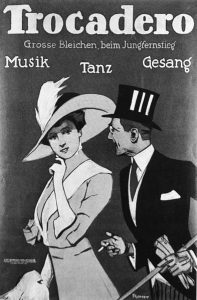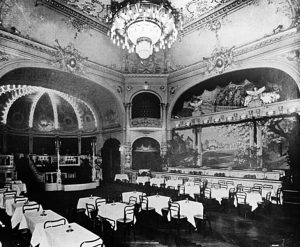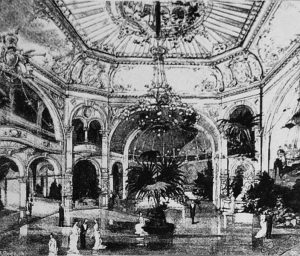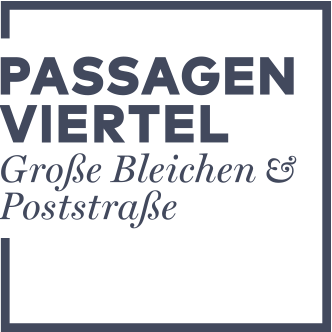1864
1864
Dining & Dancing
In the early years of the 20th century, the Trocadero was arguably the most exquisite restaurant and night club in all of Hamburg. Its dome ceiling was as spectacular as its entertainment programme. The discreet access through a street-facing bookstore building chimed with the Hamburg mentality, which prefers classy understatement and eschews overt flamboyancy.In the early years of the 20th century, the Trocadero was arguably the most exquisite restaurant and night club in all of Hamburg. Its dome ceiling was as spectacular as its entertainment programme. The discreet access through a street-facing bookstore building chimed with the Hamburg mentality, which prefers classy understatement and eschews overt flamboyancy.
The Trocadero was an enormous establishment and its night entertainment programme was legendary. Hamburg’s most sophisticated night club was shielded from street view by a non-descript 1864 building, which housed the C. Boysen bookstore.
In 1890, successful restaurant operator Julius Gertig invested the princely sum of 330,000 marks in a roof covering a space of 990 square metres. The glass dome was fourteen and a half metres in diameter and the room was illuminated by eight arch lamps and 450 light bulbs. Ninety of these light bulbs lit up a giant chandelier measuring almost four metres in diameter. Christened »Feensaal« (»Fairy Hall«) by Hertig, the establishment was comprised of a huge restaurant, five bowling alleys and a number of pool tables. Its schedule was packed with daily concerts and performances.



When Gertig died in 1898, he left this gem to the »Wiener Renngesellschaft« (Viennese horse racing society), which certainly knew how to keep the discerning Hamburg clientele well entertained.
A la carte dinners were served from 10 p.m. to 4 a.m. The dress code was strict – only tailcoats and dinner jackets were permissible. Fifteen ladies provided entertainment at the long bar on the first floor alone. Cabaret performances loosened the mood in the domed hall, taking turns with the finest dance and show bands of the day. Ballroom dancers were on hand to dance with single ladies.
In 1930 an author wrote that everything at the Trocadero – from the suggestive music to the red wallpaper, from the private boxes to the reportedly largest consumption of sparkling wine in all of Germany – was designed to undermine guests’ moral bearings. Then came the war and the government’s ban on dancing. In 1940 there was a short interlude with cabaret performances by »Die Gondel« but then the Trocadero’s fate was sealed when the street was destroyed by incendiary and explosive bombs.
In 1954 local restaurateur Adolf Gustav had an office block built on the street-facing part of the plot and the early seventies saw the rear-facing part become part of today’s Hanseviertel mall.
